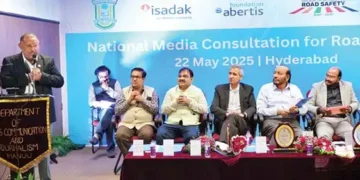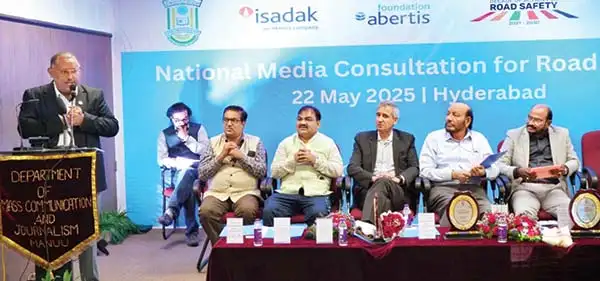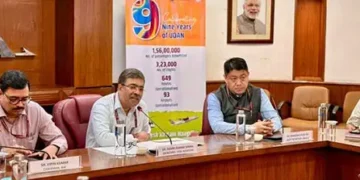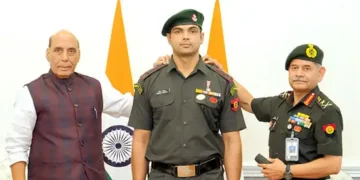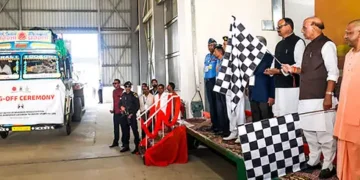Madhurendra Sinha
CHILDREN are our future, and they deserve a better quality of life and, possibly, better facilities. But in reality, they are the most vulnerable to several kinds of dangers; the biggest being road accidents.
In a country like India, there is little concern about road safety. As a result, 42 children and 31 adolescents die on roads every day. The number of child and adolescent road crash fatalities is continuously increasing.
According to a latest report by Unicef, between 2011 and 2022, this figure increased by 113 per cent, reaching 198,236. During a recent National Media Consultation on Road Safety and Systems Strengthening, in Hyderabad, the focus was on repositioning road safety as a critical child rights, public health and development issue. Strengthening the role of media in influencing safer behaviour, better enforcement and systematic reform was also emphasised. The workshop was organised by Unicef India, in collaboration with the Department of Mass Communication and Journalism, Maulana Azad National Urdu University (MANUU).
“Children’s safety on the roads requires more than laws and infrastructure – it demands collaborative, collective action. Safer school zones, stronger emergency care systems, and awareness campaigns all play a role,” said Zafrin Chowdhury, Chief of Communication, Advocacy and Partnerships at Unicef India. The media, she said, “holds a unique power: turning statistics into compelling stories – stories that encourage individual and societal action.”
Dr G Gururaj, Head of the WHO Collaborating Centre on Road Safety and Injury Prevention, Bengaluru, noted that road crashes are not random accidents but predictable outcomes of systemic failures. “We have the data. We have the laws. What we lack is sustained discourse and public demand – and that is where the media must step in. Telling the right stories can prevent the wrong outcomes,” he remarked.
Dr Syed Hubbe Ali, Health Specialist, Unicef India Country Office, highlighted the need for an integrated public health response to road safety, especially one centred on prevention. Dr Zelalem Taffesse, Chief, Field Office Hyderabad, Unicef, called for a multi-sectoral approach to road safety. When it comes to road accidents, there is no difference between illiterates, semi-literates and the highly educated; they all behave in the same manner. This point was emphasised by an expert citing the fatal accident of Tata Group’s former Chairman Cyrus Mistry. The car, he said was being driven at a speed of 150 km and Mistry was not wearing a seat belt.
